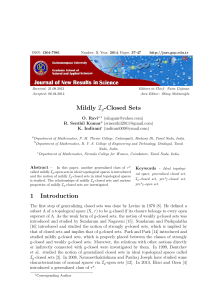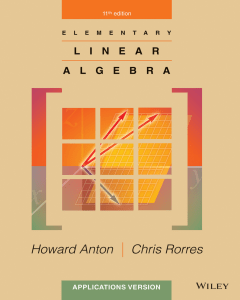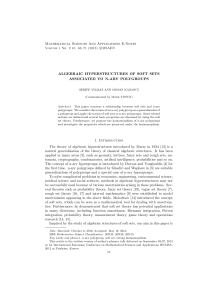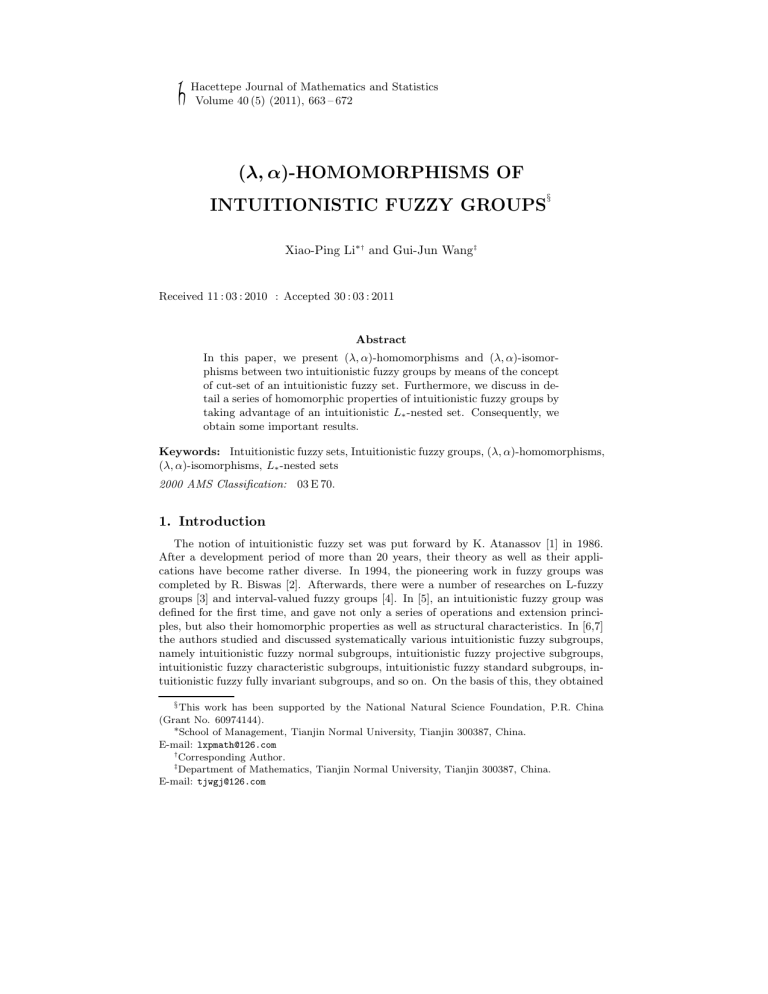
Hacettepe Journal of Mathematics and Statistics
Volume 40 (5) (2011), 663 – 672
(λ, α)-HOMOMORPHISMS OF
INTUITIONISTIC FUZZY GROUPS
§
Xiao-Ping Li∗† and Gui-Jun Wang‡
Received 11 : 03 : 2010 : Accepted 30 : 03 : 2011
Abstract
In this paper, we present (λ, α)-homomorphisms and (λ, α)-isomorphisms between two intuitionistic fuzzy groups by means of the concept
of cut-set of an intuitionistic fuzzy set. Furthermore, we discuss in detail a series of homomorphic properties of intuitionistic fuzzy groups by
taking advantage of an intuitionistic L∗ -nested set. Consequently, we
obtain some important results.
Keywords: Intuitionistic fuzzy sets, Intuitionistic fuzzy groups, (λ, α)-homomorphisms,
(λ, α)-isomorphisms, L∗ -nested sets
2000 AMS Classification: 03 E 70.
1. Introduction
The notion of intuitionistic fuzzy set was put forward by K. Atanassov [1] in 1986.
After a development period of more than 20 years, their theory as well as their applications have become rather diverse. In 1994, the pioneering work in fuzzy groups was
completed by R. Biswas [2]. Afterwards, there were a number of researches on L-fuzzy
groups [3] and interval-valued fuzzy groups [4]. In [5], an intuitionistic fuzzy group was
defined for the first time, and gave not only a series of operations and extension principles, but also their homomorphic properties as well as structural characteristics. In [6,7]
the authors studied and discussed systematically various intuitionistic fuzzy subgroups,
namely intuitionistic fuzzy normal subgroups, intuitionistic fuzzy projective subgroups,
intuitionistic fuzzy characteristic subgroups, intuitionistic fuzzy standard subgroups, intuitionistic fuzzy fully invariant subgroups, and so on. On the basis of this, they obtained
§ This
work has been supported by the National Natural Science Foundation, P.R. China
(Grant No. 60974144).
∗School of Management, Tianjin Normal University, Tianjin 300387, China.
E-mail: [email protected]
†
Corresponding Author.
‡
Department of Mathematics, Tianjin Normal University, Tianjin 300387, China.
E-mail: [email protected]
664
X. -P. Li, G. -J. Wang
several class of intuitionistic fuzzy subgroups based on direct product groups and their
projections. In [8-10] the authors generalized intuitionistic fuzzy subgroups by invoking
the T-S norm operator, and in the meanwhile, suggested the direct product characteristics
of intuitionistic fuzzy subgroups with respect to the T-S norm. Especially, they obtained
a few important results for the homomorphisms and isomorphisms of hyper-intuitionistic
fuzzy subgroups in the sense of homomorphisms and isomorphisms between two classical
groups. All of these enrich and perfect the theoretical aspects of fuzzy groups.
In this paper, we shall present (λ, α)-homomorphisms and (λ, α)-isomorphisms between two intuitionistic fuzzy groups in the light of the concept of the cut set of intuitionistic fuzzy sets introduced in [3] from another angle. Furthermore, we discuss in
detail a series of their homomorphic properties by means of an intuitionistic L∗ -nested set.
Consequently, these results lay the foundations for the wide applications of intuitionistic
fuzzy sets.
2. Preliminaries
In this section, as a preparation, we first introduce some notations which will be used
in the paper, and meanwhile we recall some conclusions with respect to intuitionistic
fuzzy sets and intuitionistic fuzzy groups.
2.1. Definition. . Let X be a classical set. A set of triads of the form
A = {hx, µA (x), νA (x)i : x ∈ X, 0 ≤ µA (x) + νA (x) ≤ 1},
is called an intuitionistic fuzzy set on X, where the functions µA : X → [0, 1] and
νA : X → [0, 1] denote the degree of membership (namely µA (x)) and the degree of
nonmembership (namely νA (x)) of each element x ∈ X in the set A, respectively.
2.2. Remark. The condition “0 ≤ µA (x) + νA (x) ≤ 1” satisfied by an intuitionistic
fuzzy set A is usually omitted for convenience, and we write A = hx, µA (x), νA (x)i. The
family of all the intuitionistic fuzzy sets on X is written as IF S[X].
2.3. Definition. Let L∗ = {(λ, α) : for arbitrary λ, α ∈ [0, 1], λ + α ≤ 1}. For any
(λ1 , α1 ), (λ2 , α2 ) ∈ L∗ , the orders ≤ and < on L∗ are defined as
(λ1 , α1 ) ≤ (λ2 , α2 ) ⇐⇒ λ1 ≤ λ2 and α1 ≥ α2 ;
(λ1 , α1 ) < (λ2 , α2 ) ⇐⇒ (λ1 , α1 ) ≤ (λ2 , α2 ) and λ1 < λ2 or α1 > α2 .
By Definition 2.3, clearly, (L∗ , ≤) constitutes a complete lattice with maximum element (1, 0) and minimum element (0, 1).
2.4. Definition. Let A ∈ IF S[X]. For every (λ, α) ∈ L∗ , we define
(1) A[λ,α] = {x ∈ X : µA (x) ≥ λ, νA (x) ≤ α};
(2) A(λ,α) = {x ∈ X : µA (x) > λ, νA (x) < α};
(3) A[λ,α) = {x ∈ X : µA (x) ≥ λ, νA (x) < α};
(4) A(λ,α] = {x ∈ X : µA (x) > λ, νA (x) ≤ α}.
Then, A[λ,α] , A(λ,α) , A[λ,α) and A(λ,α] are called the (λ, α)-cut-set, strong (λ, α)-cut-set,
[λ, α)-cut-set and (λ, α]-cut-set of A, respectively.
2.5. Remark. Throughout this paper, we apply only the (λ, α)-cut-set of an intuitionist
fuzzy set to discuss problems, the others three cut-sets will not be mentioned.
2.6. Definition. (Extension Principle 1). Let X and Y be nonempty classical sets,
f : X → Y a mapping and A = hx, µA (x), νA (x)i ∈ IF S[X]. We define a mapping
Ff : IF S[X] → IF S[Y ].
(λ, α)-Homomorphisms of Intuitionistic Fuzzy Groups
665
induced by f in the form
Ff (A) = {hy, Ff (µA )(y), F̂f (νA )(y)i : y ∈ Y },
where
Ff (µA )(y) =
sup
inf
µA (x),
f −1 (y) = ∅
0,
and
F̂f (νA )(y) =
f −1 (y) 6= ∅
x∈f −1 (y)
x∈f −1 (y)
1,
νA (x),
f −1 (y) 6= ∅
f −1 (y) = ∅
2.7. Definition. (Extension Principle 2). Let X and Y be nonempty classical sets and
f : X → Y a mapping. We define a converse mapping Ff−1 : IF S[Y ] → IF S[X] induced
by f , where for all B ∈ IF S[Y ], we let
Ff−1 (B) = {hx, Ff−1 (µB )(x), Ff−1 (νB )(x)i : x ∈ X},
where Ff−1 (µB )(x) = µB (f (x)) and Ff−1 (νB )(x) = νB (f (x)).
The above two definitions together are called the extension principle for intuitionistic
fuzzy sets.
2.8. Definition. Let G be a classical group. Then A = hx, µA (x), νA (x)i ∈ IF S[G] is
called an intuitionistic fuzzy subgroup on G if the following conditions (1)–(2) are satisfied
for all x, y ∈ G,
(1) µA (xy) ≥ µA (x) ∧ µA (y), νA (xy) ≤ νA (x) ∨ νA (y);
(2) µA (x−1 ) ≥ µA (x), νA (x−1 ) ≤ νA (x).
The set of intuitionistic fuzzy subgroups on G is denoted by IF G[G] for short.
2.9. Property. [3]. Let A, B ∈ IF S[X]. For all (λ, α) ∈ L∗ , if A ⊆ B, then A[λ,α] ⊆
B[λ,α] and A(λ,α) ⊆ B(λ,α) .
2.10. Property. [3] Let A, B ∈ IF S[X]. For all (λ1 , α1 ), (λ2 , α2 ) ∈ L∗ and (λ1 , α1 ) ≤
(λ2 , α2 ), then A(λ2 ,α2 ) ⊆ A[λ2 ,α2 ] ⊆ A(λ1 ,α1 ) .
2.11. Theorem. [3] Let G be a classical group. For any (λ, α) ∈ L∗ , A ∈ IF G[G] if
and only if A[λ,α] is a subgroup of G.
2.12. Theorem. [14] Let f : X → Y be a mapping. For ordinary fuzzy sets Ã, B̃ ∈
F (X), if à ⊆ B̃, then f (Ã) ⊆ f (B̃).
2.13. Theorem. [14] Let f : X → Y be a mapping. For ordinary fuzzy sets Ã, B̃ ∈ F (Y ),
if à ⊆ B̃, then f −1 (Ã) ⊆ f −1 (B̃).
3. (λ, α)-homomorphism and (λ, α)-isomorphism
In this section, the cut-set of an intuitionistic fuzzy set will play an important role
in our discussion. Taking advantage of the definition of cut-set, we give a succession
of concepts, namely (λ, α)-homomorphism, surjective (λ, α)-homomorphism and (λ, α)isomorphism of intuitionistic fuzzy groups. For each notion, we aim to give an equivalent
characterization. In the sense of the so-called (surjective) (λ, α)-homomorphism and
(λ, α)-isomorphism, the relationships among the cut-set of the image of the mapping
induced by f , the image of the cut-set of an intuitionistic fuzzy set and the cut-set of the
field of values of the mapping f will be revealed.
666
X. -P. Li, G. -J. Wang
3.1. Definition. Let G1 , G2 be ordinary groups, A ∈ IF G[G1 ], B ∈ IF G[G2 ] and
f : G1 → G2 a mapping. Then for any (λ, α) ∈ L∗ , if f is an homomorphic mapping
from A[λ,α] to B[λ,α] , f is called a (λ, α)-homomorphic mapping from the intuitionistic
fuzzy group A to the intuitionistic fuzzy group B.
3.2. Lemma. Let X, Y be classical sets, A ∈ IF S[X], B ∈ IF S[Y ], f : X → Y . For
any (λ, α) ∈ L∗ , we have
(1) f (A(λ,α) ) ⊆ (Ff (A))(λ,α) and f (A[λ,α] ) ⊆ (Ff (A))[λ,α] ;
(2) (Ff−1 (B))[λ,α] = f −1 (B[λ,α] ) and (Ff−1 (B))(λ,α) = f −1 (B(λ,α) ).
Proof. (1) For arbitrary y ∈ f (A(λ,α) ), we know that there exists x ∈ A(λ,α) such that
f (x) = y, which means x ∈ f −1 (y), µA (x) > λ and νA (x) < α. By Definition 2.6, we
have
Ff (µA )(y) =
sup
µA (t) ≥ µA (x) > λ
t∈f −1 (y)
and
F̂f (νA )(y) =
inf
t∈f −1 (y)
νA (t) ≤ νA (x) < α.
This shows that y ∈ (Ff (A))(λ,α) , i.e., f (A(λ,α) ) ⊆ (Ff (A))(λ,α) . Similarly, we can prove
that f (A[λ,α] ) ⊆ (Ff (A))[λ,α] .
(2) For every x, x ∈ f −1 (B[λ,α] ) if and only if f (x) ∈ B[λ,α] if and only if µB (f (x)) ≥ λ
and νB (f (x)) ≤ α. By Definition 2.7, it is easy to see that
Ff−1 (µB )(x) = µB (f (x)) ≥ λ, Ff−1 (νB )(x) = νB (f (x)) ≤ α
i.e., x ∈ (Ff−1 (B))[λ,α] . Therefore, (Ff−1 (B))[λ,α] = f −1 (B[λ,α] ). Using a similar method
to the above, we can obtain (Ff−1 (B))(λ,α) = f −1 (B(λ,α) ), so we omit the proof.
3.3. Lemma. Let X, Y be classical sets, A ∈ IF S[X], B ∈ IF S[Y ], f : X → Y . Then
(Ff (A))[λ,α] = f (A[λ,α] ) for any (λ, α) ∈ L∗ if and only if for each y ∈ Y there exists
x0 ∈ f −1 (y) such that Ff (µA )(y) = µA (x0 ) and F̂f (νA )(y) = νA (x0 ).
Proof. Necessity. For arbitrary y ∈ Y , let Ff (µA )(y) = λ and F̂f (νA )(y) = α. Then
(λ, α) ∈ L∗ , and y ∈ (Ff (A))[λ,α] = f (A[λ,α] ). It follows that there exists x0 ∈ A[λ,α]
such that y = f (x0 ). Hence, we have x0 ∈ f −1 (y) which satisfies µA (x0 ) ≥ λ and
νA (x0 ) ≤ α. Consequently, we have
µA (x0 ) ≥ Ff (µA )(y) =
µA (x) ≥ µA (x0 )
sup
x∈f −1 (y)
and
νA (x0 ) ≤ F̂f (νA )(y) =
inf
x∈f −1 (y)
νA (x) ≤ νA (x0 ).
It is straightforward to verify that Ff (µA )(y) = µA (x0 ) and F̂f (νA )(y) = νA (x0 ).
Sufficiency. For arbitrary (λ, α) ∈ L∗ , by the hypothesis we can derive that y ∈
(Ff (A))[λ,α] if and only if there exists x0 ∈ f −1 (y) such that µA (x0 ) = Ff (µA )(y) =
sup µA (x) ≥ λ and νA (x0 ) = F̂f (νA )(y) =
inf νA (x) ≤ α. Conversely, f (x0 ) =
x∈f −1 (y)
y and x0 ∈ A[λ,α] , i.e., y ∈ f (A[λ,α] ).
x∈f −1 (y)
3.4. Definition. Let X, Y be classical sets, f : X → Y , A ∈ IF S[X]. Then for every
y ∈ Y , if there exists x0 ∈ f −1 (y) such that Ff (µA )(y) = µA (x0 ) and F̂f (νA )(y) =
νA (x0 ), then f is said to be quasi-surjective.
(λ, α)-Homomorphisms of Intuitionistic Fuzzy Groups
667
By Definition 3.4 and Lemma 3.3, we can easily get the following Lemma.
3.5. Lemma. Let X, Y be classical sets, f : X → Y , A ∈ IF S[X]. Then for any
(λ, α) ∈ L∗ we have (Ff (A))[λ,α] = f (A[λ,α] ) if and only if f is quasi-surjective.
Based on the above preparation, we give the theorem as follows.
3.6. Theorem. Let G1 , G2 be ordinary groups, A ∈ IF G[G1 ], B ∈ IF G[G2 ] and f :
G1 → G2 quasi-surjective. Then f is a (λ, α)-homomorphic mapping from A to B if
and only if f is an homomorphic mapping from G1 to G2 , and (Ff (A))[λ,α] ⊆ B[λ,α] for
arbitrary (λ, α) ∈ L∗ .
Proof. Necessity. Since f is a (λ, α)-homomorphic mapping from A to B, for every
(λ, α) ∈ L∗ , then using Theorem 3.6, we can infer that f is an homomorphic mapping
from A[λ,α] to B[λ,α] . Actually, G1 = A[0,1] , G2 = B[0,1] , thus f is an homomorphic
mapping from G1 to G2 .
As f is quasi-surjective, in the light of Lemma 3.5 and Definition 3.1, we know that
(Ff (A))[λ,α] = f (A[λ,α] ) ⊆ B[λ,α] .
Sufficiency. For all (λ, α) ∈ L∗ , because f is quasi-surjective, for any x ∈ A[λ,α] ⊆ G1 ,
we have
f (x) ∈ f (A[λ,α] ) = (Ff (A))[λ,α] ⊆ B[λ,α] .
Therefore, f is a mapping from A[λ,α] to B[λ,α] . Since f is an homomorphic mapping
from G1 to G2 , then f (xy) = f (x)f (y) holds for arbitrary x, y ∈ A[λ,α] ⊆ G1 , where
f (x), f (y) ∈ B[λ,α] . According to Theorem 2.11, this indicates that B[λ,α] is a subgroup
of G2 . Therefore, f (x)f (y) ∈ B[λ,α] , that is to say, f preserves the operation.
Synthesizing the above discussion, we can prove that f is an homomorphic mapping
from A[λ,α] to B[λ,α] . Hence, by Definition 3.1, we obtain that f is a (λ, α)-homomorphic
mapping from A to B.
3.7. Definition. Let G1 , G2 be ordinary groups, A ∈ IF G[G1 ], B ∈ IF G[G2 ], f : X →
Y . Then for any (λ, α) ∈ L∗ , if f is a surjective homomorphic mapping from A[λ,α] to
B[λ,α] , then f is called a surjective (λ, α)-homomorphic mapping from the intuitionistic
fuzzy group A the to intuitionistic fuzzy group B, moreover A and B are said to be
(λ, α)-homomorphic with respect to f .
3.8. Theorem. Let G1 , G2 be ordinary groups, A ∈ IF G[G1 ], B ∈ IF G[G2 ], f : G1 →
G2 with f quasi-surjective. Then f is a surjective (λ, α)-homomorphic mapping from A
to B if and only if f is a surjective homomorphic mapping from G1 to G2 with f (A[λ,α] ) =
B[λ,α] for arbitrary (λ, α) ∈ L∗ .
Proof. Necessity. By hypothesis and Definition 3.7, for all (λ, α) ∈ L∗ we get that f is
a surjective homomorphic mapping from A[λ,α] to B[λ,α] . Noting that G1 = A[0,1] and
G2 = B[0,1] , evidently, f is a surjective homomorphic mapping from G1 to G2 . Of course,
we have f (A[λ,α] ) ⊆ B[λ,α] .
On the other hand, B[λ,α] ⊆ f (A[λ,α] ) is obvious. And so f (A[λ,α] ) = B[λ,α] .
Sufficiency. For any (λ, α) ∈ L∗ and y ∈ B[λ,α] then f (A[λ,α] ) = B[λ,α] implies that
there exists x ∈ A[λ,α] such that f (x) = y, i.e., f is a surjection from A[λ,α] to B[λ,α] .
The proof that f preserves the operation is parallel to that in the proof of sufficiency
in Theorem 3.1, so we omit it. Hence, For any (λ, α) ∈ L∗ , it follows that f is a surjective
homomorphic mapping from A[λ,α] to B[λ,α] .
668
X. -P. Li, G. -J. Wang
3.9. Definition. Let G1 , G2 be ordinary groups, A ∈ IF G[G1 ], B ∈ IF G[G2 ] and
f : X → Y . Then for arbitrary (λ, α) ∈ L∗ , if f is an isomorphic mapping from A[λ,α] to
B[λ,α] , then f is called a (λ, α)-isomorphic mapping from the intuitionistic fuzzy group
A to the intuitionistic fuzzy group B, moreover A and B are said to be (λ, α)-isomorphic
with respect to f .
3.10. Theorem. Let G1 , G2 be ordinary groups, A ∈ IF G[G1 ], B ∈ IF G[G2 ], f : G1 →
G2 with f be quasi-surjective. Then f is a (λ, α)-isomorphic mapping from A to B if
and only if f is an isomorphic mapping from G1 to G2 with f (A[λ,α] ) = B[λ,α] for each
(λ, α) ∈ L∗ .
Proof. The proof follows by combining Theorem 3.6 and Theorem 3.8. We omit the
details.
4. (λ, α)-homomorphic properties
This section focuses on (λ, α)-homomorphic properties of intuitionistic fuzzy group.
Firstly, we give the definition of a L∗ -pre-surjective mapping f and present a characterization. We then introduce the concept of an intuitionistic L∗ -nested set. Finally, we
summarize some homomorphic properties with respect to an intuitionistic fuzzy group
by taking advantage of these concepts.
4.1. Definition. Let X, Y be classical sets, f : X → Y a mapping, and A ∈ IF S[X].
If for every (λ1 , α1 ), (λ2 , α2 ) ∈ L∗ with (λ1 , α1 ) < (λ2 , α2 ) we have (Ff (A))[λ2,α2 ] ⊆
f (A[λ1 ,α1 ] ), then f is called L∗ -pre-surjective, or it is said that f posses the L∗ -presurjective property.
4.2. Theorem. Let f : X → Y be a mapping, A ∈ IF S[X], (λ1 , α1 ), (λ2 , α2 ) ∈ L∗
satisfy (λ1 , α1 ) < (λ2 , α2 ). Then f is L∗ -pre-surjective if and only if for every y ∈
(Ff (A))[λ2 ,α2 ] there exists x ∈ A[λ1 ,α1 ] such that f (x) = y.
Proof. By the hypothesis and Definition 4.1, it is not hard to see that f is L∗ -presurjective iff (Ff (A))[λ2,α2 ] ⊆ f (A[λ1 ,α1 ] ) iff y ∈ (Ff (A))[λ2 ,α2 ] implies y ∈ f (A[λ1 ,α1 ] ) iff
there exists x ∈ A[λ1 ,α1 ] such that f (x) = y.
4.3. Definition. Let H : L∗ → P (X), (λ, α) 7→ H(λ, α) ∈ P (X) be a mapping, T an
index set. Then the mapping H is called an intuitionistic L∗ -nested set on X, if the
following conditions are satisfied
(1) (λ
T 1 , α1 ) < (λ2 , α2 )Timplies H(λ2 , α2 ) ⊆ H(λ1 , α1 );
(2) t∈T H(λt , αt ) ⊆ {H(λ, α) : (λ, α) < (supt∈T λt , inf t∈T αt )}.
For simplicity, the set of all intuitionistic L∗ -nested sets on X is written as NL∗ (X).
4.4. Theorem. Let f : X → Y be a mapping, A ∈ IF S[X], and for all (λ, α) ∈ L∗ , let
H(λ, α) = f (A[λ,α] ). Then H ∈ NL∗ (Y ) if and only if f is L∗ -pre-surjective.
Proof. Necessity. In order to prove f is L∗ -pre-surjective, we need only prove (Ff (A))[λ2 ,α2 ] ⊆
f (A[λ1 ,α1 ] ), where (λ1 , α1 ), (λ2 , α2 ) ∈ L∗ and (λ1 , α1 ) < (λ2 , α2 ).
In fact, for any y ∈ (Ff (A))[λ2,α2 ] , we easily find
Ff (µA )(y) =
sup
µA (x) ≥ λ2 ,
x∈f −1 (y)
F̂f (νA )(y) =
inf
x∈f −1 (y)
νA (x) ≤ α2 .
Putting T = {t ∈ X : f (t) = y} and µA (t) = λt , νA (t) = αt , we have
sup λt = Ff (µA )(y) ≥ λ2 ,
t∈T
inf αt = F̂f (νA )(y) ≤ α2 .
t∈T
For t ∈ T , we have t ∈ A[λt ,αt ] with y = f (t), thus y ∈ f (A[λt ,αt ] ).
(λ, α)-Homomorphisms of Intuitionistic Fuzzy Groups
669
Since the mapping H is an intuitionistic L∗ -nested set on Y , by Definition 4.3, it is
straightforward to get that
\
y∈
f (A[λt ,αt ] ) ⊆ {f (A[λ,α] ) : sup λt > λ, inf αt < α}.
t∈T
t∈T
t∈T
Considering (λ1 , α1 ) < (λ2 , α2 ) ≤ (sup λt , inf αt ), we infer that y ∈ f (A[λ1 ,α1 ] ), which
t∈T
t∈T
means that (Ff (A))[λ2 ,α2 ] ⊆ f (A[λ1 ,α1 ] ). In the light of Definition 4.1, that is to say that
f posses L∗ -pre-surjective property.
Sufficiency. On the one hand, whenever (λ1 , α1 ) < (λ2 , α2 ), by using Property 2.10
and Theorem 2.12, f (A[λ2 ,α2 ] ) ⊆ f (A[λ1 ,α1 ] ) is clear.
T
On the other hand, for any y ∈
f (A[λt ,αt ] ) there exists xt ∈ A[λt ,αt ] such that
t∈T
f (xt ) = y. Consequently, for arbitrary t ∈ T , we have
Ff (µA )(y) ≥ sup µA (xt ) ≥ sup λt ,
t∈T
F̂f (νA )(y) ≤ inf νA (xt ) ≤ inf αt .
t∈T
t∈T
Therefore, y ∈ (Ff (A))[ sup λt , inf
t∈T
t∈T
t∈T
αt ] .
As f is L∗ -pre-surjective, for (λ, α) < (sup λt , inf αt ), in accordance with Theorem 4.2,
t∈T
t∈T
we can deduce
that there exists x ∈ A[λ,α] such that f (x) = y. This implies y ∈ f (A[λ,α] ),
T
thus y ∈ {f (A[λ,α] ) : (λ, α) < (sup λt , inf αt )}. It is not hard to see that
t∈T
\
t∈T
t∈T
\
f (A[λt ,αt ] ) ⊆ {f (A[λ,α] ) : (λ, α) < (sup λt , inf αt )}.
t∈T
t∈T
And so, making use of Definition 4.3, this indicates that H ∈ NL∗ (X).
4.5. Corollary. Let f : X → Y be a mapping, A ∈ IF S[X]. For every (λ, α) ∈ L∗ , we
define H(λ, α) = f (A[λ,α] ), then H ∈ NL∗ (X) iff (Ff (A))[λ,α] ⊆ f (A[λ,α] ).
Proof. Take any (λ1 , α1 ), (λ2 , α2 ) ∈ L∗ with (λ1 , α1 ) < (λ2 , α2 ) ∈ L∗ . By Property 2.10
and Theorem 2.12, we obtain f (A[λ2 ,α2 ] ) ⊆ f (A[λ1 ,α1 ] ).
Combined with (Ff (A))[λ2 ,α2 ] ⊆ f (A[λ2 ,α2 ] ), we have (Ff (A))[λ2 ,α2 ] ⊆ f (A[λ1 ,α1 ] ),
i.e., f is L∗ -pre-surjective. Thus, utilizing Theorem 4.4, we can infer the mapping H is
an intuitionistic L∗ -nested set on X, i.e., H ∈ NL∗ (X).
We may prove the converse by adopting a similar method to the above.
4.6. Corollary. Let f : X → Y be a quasi-surjective mapping, A ∈ IF S[X], and for
any (λ, α) ∈ L∗ let H(λ, α) = f (A[λ,α] ). Then H ∈ NL∗ (X).
Proof. Easy in the light of Lemma 3.5 and Corollary 4.5, and we omit the details.
4.7. Lemma.
Let X be a classical set, A ∈ IF S[X]. Then for arbitrary (λt , αt ) ∈
T
L∗ , t ∈ T , t∈T A[λt ,αt ] = A[ sup λt , inf αt ] .
t∈T
t∈T
T
Proof. On one hand, for any x ∈ t∈T A[λt ,αt ] we have x ∈ A[λt ,αt ] for all t ∈ T ,
furthermore, we get µA (x) ≥ λt and νA (x) ≤ αt . Consequently,
µA (x) = sup µA (x) ≥ sup λt and νA (x) = inf νA (x) ≤ inf αt .
t∈T
Furthermore, x ∈ A[ sup λt , inf
t∈T
\
t∈T
t∈T
t∈T
t∈T
αt ] ,
A[λt ,αt ] ⊆ A[ sup λt , inf
t∈T
i.e.,
t∈T
αt ] .
t∈T
670
X. -P. Li, G. -J. Wang
On the other hand, for all x ∈ A[ sup λt , inf
t∈T
t∈T
αt ]
and t ∈ T , we can derive that
µA (x) ≥ sup λt ≥ λt and νA (x) ≤ inf αt ≤ αt .
t∈T
t∈T
This
shows that µA (x) ≥ λt and νA (x) ≥ αt , i.e., x ∈
T
t∈T A[λt ,αt ] = A[ sup λt , inf αt ] .
t∈T
T
t∈T
A[λt ,αt ] .
t∈T
Therefore,
4.8. Theorem. Let G1 , G2 be ordinary groups, f : G1 → G2 a mapping with f quasisurjective, A ∈ IF G[G1 ], B ∈ IF G[G2 ]. Then the following three conclusions hold.
(1) If f is a (λ, α)-homomorphic mapping from A to B with the L∗ -pre-surjective
property, then Ff (A) ∈ IF G[G2 ], and f is also a (λ, α)-homomorphic mapping
from A to Ff (A).
(2) If f is a (λ, α)-surjective homomorphic mapping from A to B, then Ff−1 (B) ∈
IF G[G1 ], and f is also a surjective homomorphic mapping from Ff−1 (B) to B.
(3) If f is a (λ, α)-isomorphic mapping from A to B, and f is L∗ -pre-surjective,
then
(i) Ff (A) ∈ IF G[G2 ], and f is a (λ, α)-isomorphic mapping from A to Ff (A);
(ii) Ff−1 (B) ∈ IF G[G1 ], and f is also a (λ, α)-isomorphic mapping from
Ff−1 (B) to B.
Proof. (1) On the one hand, as f is L∗ -pre-surjective, it follows that H ∈ NL∗ (G2 ), where
H(λ, α) = f (A[λ,α] ) for every (λ, α) ∈ L∗ . Since f is quasi-surjective, by Lemma 3.5, for
arbitrary (λ, α) ∈ L∗ , we have (Ff (A))[λ,α] = f (A[λ,α] ). And so, Ff (A) ∈ IF G[G2 ].
In addition, for A ∈ IF G[G1 ], according to Theorem 2.11, we infer that A[λ,α] is a
subgroup of X. Thus, utilizing the homomorphic property of classical groups, we can
conclude that f (A[λ,α] ) is a subgroup of G2 . It is easy to verify that (Ff (A))[λ,α] is a
subgroup of G2 , further, from Theorem 2.11, we obtain Ff (A) ∈ IF G[G2 ].
On the other hand, since f is a (λ, α)-homomorphic mapping from A to B, we see that
f is an homomorphic mapping from A[λ,α] to B[λ,α] . Evidently, for every x, y ∈ A[λ,α] ,
then f (x), f (y) ∈ f (A[λ,α] ). Combining with Theorem 3.6, we have
f (A[λ,α] ) = (Ff (A))[λ,α] ⊆ B[λ,α] .
Now, as f is a homomorphism between classical groups, f (xy) = f (x)f (y). Because
(Ff (A))[λ,α] is a subgroup of G2 , this implies f (x)f (y) ∈ (Ff (A))[λ,α] , i.e., f preserves
the operation. Consequently, f is a (λ, α)-homomorphic mapping from A to Ff (A).
(2) For any (λ, α) ∈ L∗ , setting H(λ, α) = f −1 (B[λ,α] ), we prove H ∈ NL∗ (X).
Firstly, for any (λ1 , α1 ), (λ2 , α2 ) ∈ L∗ with (λ1 , α1 ) < (λ2 , α2 ) ∈ L∗ , by Property 2.10
and Theorem 2.13, we get f −1 (B[λ2 ,α2 ] ) ⊆ f −1 (B[λ1 ,α1 ] ).
Secondly, applying Lemma 3.2 and the properties of cut-sets of intuitionistic fuzzy
sets over and over again, we can summarize that
\ −1
\ −1
f (B[λt ,αt ] ) =
(Ff (B))[λt ,αt ] .
t∈T
t∈T
By means of Lemma 4.7, it follows that
\ −1
(Ff (B))[λt ,αt ] = (Ff−1 (B))[ sup λt , inf
t∈T
t∈T
Since (Ff−1 (B))[ sup λt , inf
t∈T
\
t∈T
t∈T
αt ]
t∈T
= f −1 (B[ sup λt , inf
t∈T
t∈T
αt ] .
αt ] ),
it is straightforward to see that
f −1 (B[λt ,αt ] ) ⊆ {f −1 (B[λ,α] ) : (λ, α) < (sup λt , inf αt )}.
t∈T
t∈T
(λ, α)-Homomorphisms of Intuitionistic Fuzzy Groups
671
Consequently, H ∈ NL∗ (G1 ). By Lemma 3.2, (Ff−1 (B))[λ,α] = f −1 (B[λ,α] ). Thus,
Ff−1 (B) ∈ IF S[X].
Without loss of generality, for every (λ, α) ∈ L∗ , let Ff−1 (B)[λ,α] 6= ∅. Then, for any
x, y ∈ (Ff−1 (B))[λ,α] = f −1 (B[λ,α] ), there exists x0 , y0 ∈ B[λ,α] such that f (x) = x0 and
f (y) = y0 .
As f is a (λ, α)-homomorphic mapping from A to B, and B[λ,α] is a subgroup of G2 ,
we infer immediately that
f (xy −1 ) = f (x)(f (y))−1 = x0 y0−1 ∈ B[λ,α] .
This means that
xy −1 ∈ f −1 (B[λ,α] ) = (Ff−1 (B))[λ,α] ,
and so, (Ff−1 (B))[λ,α] is a subgroup of G1 . Furthermore, Ff−1 (B) ∈ IF G[G1 ].
Since f is a surjective (λ, α)-homomorphic mapping from A to B, from Definition 3.7,
we know that f is a surjective homomorphic mapping from A[λ,α] to B[λ,α] . For all
x, y ∈ (Ff−1 (B))[λ,α] , notice that B ∈ IF G[G2 ], f (xy) = f (x)f (y) ∈ B[λ,α] . Hence, f is
a surjective (λ, α)-homomorphic mapping from Ff−1 (B) to B.
(3) The conditions in (3) bring about two cases, which can be proved using a similar
method. We omit the details.
5. Conclusions
The concepts of (λ, α)-homomorphism and (λ, α)-isomorphism between two intuitionistic fuzzy groups are introduced, and then some important results are obtained. Finally,
we summarize some homomorphic properties with respect to intuitionistic fuzzy groups
by means of intuitionistic L∗ -nested sets. It follows that the explorations into the theory of fuzzy groups are becoming deeper and more extensive. There is no doubt that
these achievements have an important effect on enriching the theory of fuzzy groups.
Consequently, we may say that (λ, α)-homomorphisms and (λ, α)-isomorphisms could be
applied in some computational technical problems in the future.
References
[1] Atanassov, K. Intuitionistic fuzzy sets, Fuzzy Sets and Systems 20, 87–96, 1986.
[2] Biswas, R. Rosenfeld’s fuzzy subgroups with interval-valued membership functions, Fuzzy
Sets and Systems Int 63, 87–90, 1994.
[3] Li, M. The cut-sets of intuitionistic fuzzy sets, J. Liaoning Normal University 30, 152–154,
2007.
[4] Li, X. P. The intuitionistic fuzzy normal subgroup and its some equivalent propositions,
BUSEFAL 82, 40–44, 2000.
[5] Li, X. P. The intuitionistic fuzzy groups of T-S norms and their operations, J. Tianjin
Normal University 23, 39–43, 2003.
[6] Li, X. P. Product and extension operation of the intuitionistic fuzzy normal subgroups, J.
Fuzzy Mathematics 13, 96–105, 2005.
[7] Li, X. P. and Wang, G. J. The SH-interval-valued fuzzy subgroup, Fuzzy Sets and Systems
112, 319–325, 2000.
[8] Li, X. P. and Wang, G. J. The intuitionistic fuzzy groups and its homomorphism images,
Fuzzy Systems and Math. 14, 45–50, 2000.
[9] Li, X. P. and Wang, G. J. Extended operations on normal interval valued fuzzy sets space,
J. Fuzzy Mathematics 9, 545-554, 2001.
[10] Li, X. P. and Wang, G. J. The hyper-intuitionistic fuzzy groups with respect to T-S norms
and their homomorphisms, Journal of Mathematics 28, 71–76, 2008.
672
X. -P. Li, G. -J. Wang
[11] Li, X. P. and Wang, G. J. A few kinds of intuitionistic fuzzy groups on a direct product group
and their projections, Pure and Applied Mathmatics 25, 1–7, 2009.
[12] Li, X. P. and Zheng, C. W. The direct product characteristics of the intuitionistic fuzzy
groups with respect to T-S norms, Mathematics in Practice and Theory 38, 109–115, 2008.
[13] Lu, T. and Luo, C. Z. The intuitionistic fuzzy groups The homomorphism and isomorphism
of L-fuzzy groups and their properties, Fuzzy Systems and Math. 9, 33–37, 1995.
[14] Ma, J. L. and Yu, C. H. Introduction to Fuzzy Algebra (Xue Yuan Press, Beijing, 1989).
[15] Zhang, W. X. Basis of Fuzzy Mathematics (Xian Jiaotong Univ. Press, Xian, 1991).


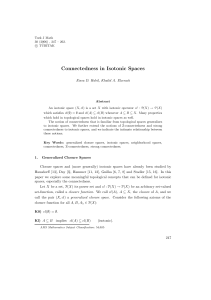
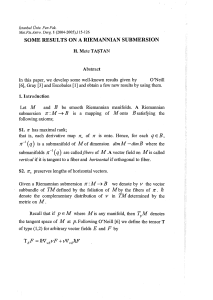
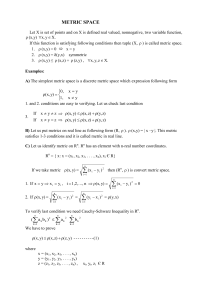
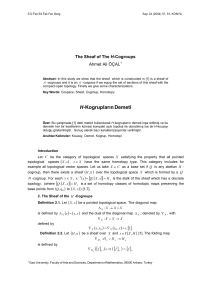
![[Erwin Kreyszig] Introductory Functional Analysis (BookFi.org)](http://s2.studylibtr.com/store/data/005904596_1-634324ffec1bfeb41b79d5ca75ede5d4-300x300.png)
